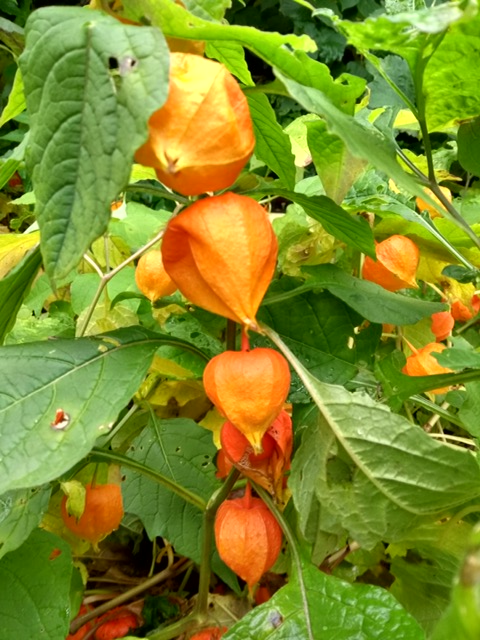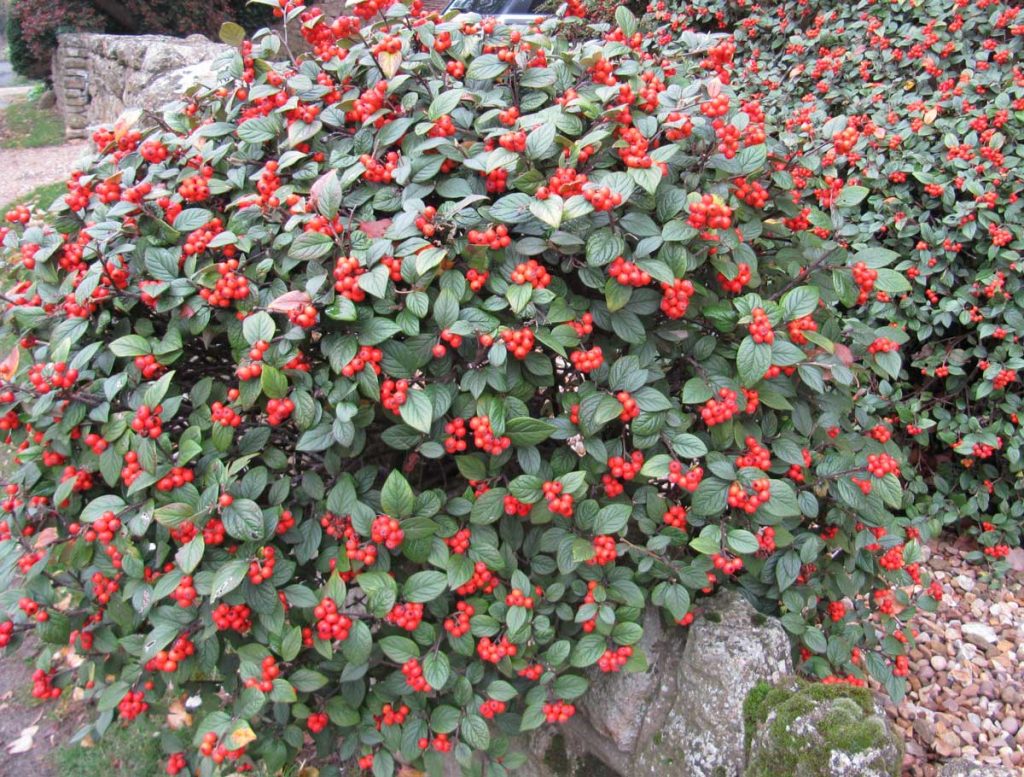November is an in between month between autumn and winter but often has late colour from leaves and especially berries.
I love Acers and there are many that will suit small gardens. Their requirement is for a sheltered site, not in an exposed windswept location. They also need a moisture retentive and free draining soil so heavy clay will never suit them. They often grow under the canopy of taller trees and like semi shade or sun. Acer palmatum Bloodgood or Fireglow have purple leaves that turn red in autumn. Another variety with pale green leaves is Katsura and they turn orange and red in autumn. Eventually these trees can reach 4m tall but it takes time! You can grow them in pots too and brighten up darker spaces but remember to repot every few years. Colour from tree leaves comes from Malus or Crab Apples, oak trees and cherry trees.
Another good plant for autumn that is rarely seen is Chinese Lanterns or Physalis alketengi franchetii. This is a perennial that gradually spreads and has boring green leaves until autumn when the orange lantern pods shine out. This plant likes any moist and well drained soil in semi shade or sunny spot and will gradually increase. Fun for Halloween or Christmas decorations.

Berries can be found on the easy to grow Pyracantha which have long needle like spines but have white flowers then the red, yellow or orange berries in autumn and winter. They will grow on any soil and in any situation including exposed positions. Cotoneasters are also great especially for bees as many flower in early spring but they save the best show for autumn and winter with red berries. Cotoneaster dammeri is a prostrate shrub (to 12ins high) that will drape over walls. Or for a larger shrub that can be pruned to size, try Cotoneaster lacteus. Both will grow in sun or light shade and just need well drained soil to do well. Many cotoneasters are evergreen too.


Work to do in the garden is mainly tidying up flowering shrubs by pruning to shape once the leaves have fallen off so you can see the framework. Cut out long or crossing stems and keep the plant to the height you require. Finish moving and splitting perennials before the frosts start. Also complete planting tulips and other spring flowering bulbs.
